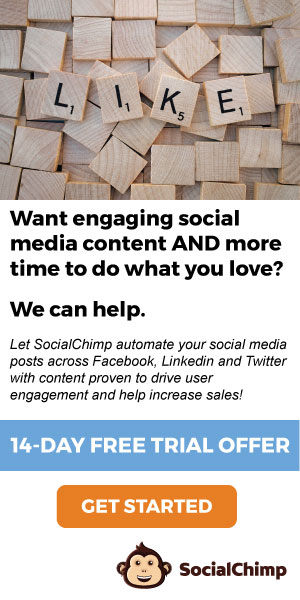Social media is where it’s at, right? And as a marketer, you need to be active in the social space. But what if you have no idea what you’re doing? You can actually do more damage to a brand or for a client by having a bad social presence than by doing nothing at all.
Here are some things to avoid when creating social media marketing campaigns.
Having no clearly defined goals
You can just start a Facebook page and post randomly and see what happens. Right? Sure, you could do that, but…if you don’t define your goals for social media marketing, you might just be wasting your time – or worse yet – your money.
Social media goals should:
- Mimic a business’ overall goals – whether that’s sales, clicks, or newsletter sign ups
- Goals for social media should be S.M.A.R.T. – specific, measurable, attainable, relevant, and timely
Once you set your goals, be sure to determine what success looks like for you or your client. Social media marketing is fluid, and you might need to make some adjustments to your campaigns or goals once you start seeing performance results. Here are some additional tips on how to reach your social media goals.
Not creating a social plan
Once you’ve determined your goals for the social space, how are you going to reach them? The first step is defining your social strategy and creating a plan. Many marketers like to create content calendars monthly that contain all of the info you could possibly need to run a successful social campaign, including links to articles, imagery, or even post copy. Here are some free social media calendar templates to help you get started.
Not knowing your audience
If you’re trying to sell hot pink joggers to teenagers, you’ll want to market in a certain way. Likewise, if you’re trying to capture the attention of middle-aged truck drivers, you might use a different tone or imagery. You need to know who you want to connect with otherwise you’re just blowing smoke. It’s important to do social media competitive analysis to see what kind of marketing competitors are doing, too, so you can develop a campaign that will resonate with your audience.
Marketing on the wrong platforms
Just like knowing who you want to market to is super important, so is understanding your audience’s preferred channels. Are they on Facebook or Instagram? Do they use YouTube? Is LinkedIn the right medium? You need to assess this before you start to deliver content or create ad campaigns. Learn more about how to select the right social media platforms here.
Not responding or interacting with your audience
Social channels are essential like a big, huge, neon sign for a brand. People can post comments, questions, and concerns – and they expect a near immediate response. If you’re not responding to what your fans, followers, or worse yet – your customers – are saying – other people will notice. According to a recent study, 42% of consumers expect a response from a brand or company’s social media team in 60 minutes or less. So you’ll need to be sure that you have a community management team in place to respond to comments or set up an auto-responder.
Ignoring your reviews
Customer service issues happen. Products fail. Life happens. If a brand receives a negative review, it can be ignored, someone from the business can respond in a hostile manner, or this can be an excellent opportunity to turn a negative into a positive and address the reviewer’s concerns and try to make things right. Many business owners do a great job of this on Yelp and other review sites. They quickly – and publicly – respond to the reviewer’s comments and try to figure out what went wrong and make things right.
Being too corporate
In the age where bots are everywhere, people like to know if they’re talking to a real human. Chewy.com is known for their amazing customer service. They go above and beyond to make their customers feel special. Humanizing a brand or business helps consumers to make a real emotional connection, and ultimately, stay loyal and hopefully spend more over time.
Being too spammy or posting too often
There’s nothing more annoying in the social space than seeing post after uninteresting post by the same company or brand. Be mindful of your audience’s time. Do they really need to know everything you want to share? Or should you scale back and find the right cadence? Check out this helpful guide from Inc.com to learn more about how frequently to post on various social channels.
Using poor imagery
We’re talking to you, watermarked stock image user. There’s nothing wrong with using stock images – sparingly. Just like spamming your audience is a turn-off, so is using inauthentic images. Audiences want to feel connected to a brand or business. You might not want to overshare or use personal images, but consumers like to put a face to a name or a feeling to a brand, so a real-life image could resonate better than the shiny happy people in a stock photo.
Not investing in paid media
In the social space, you really have to pay to play. If you want to build a solid engaged audience, be sure to devote a budget – even a small one – to amplifying your social posts. You can easily and inexpensively boost social posts to expand reach or to meet a specific conversion goal. Learn more about how to use paid media in a cost-effective way here.


